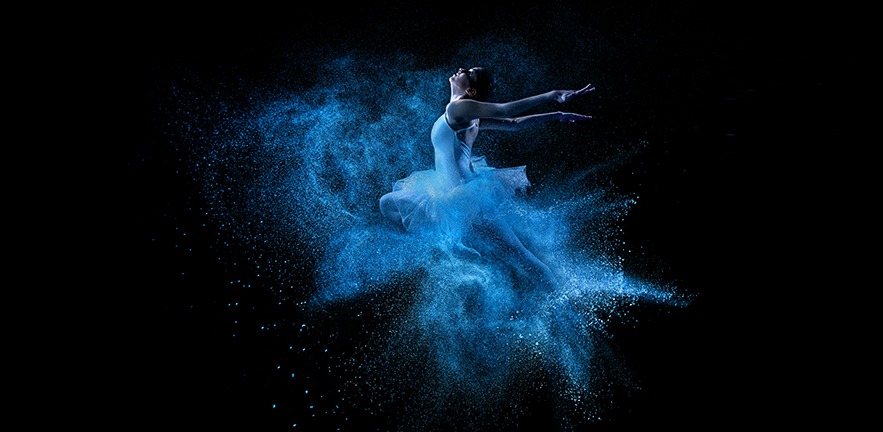Iconic ballets including The Nutcracker and Giselle can provide fresh systems-based thinking about stakeholder relationships in order to address ‘grand challenges’ such as poverty and climate change, says study co-authored by Dr Thomas Roulet at Cambridge Judge Business School.

Famous ballets such as The Nutcracker, Giselle and Apollo can help rethink stakeholder relationships from a systemic perspective in ways to better address society’s “grand challenges” such as poverty and the environment, says a new study co-authored at Cambridge Judge Business School.
Debate over stakeholder relationships typically focus on a central firm and its specific relationship with constituents, but such attention fails to properly consider a systems approach – which ballet epitomises – such as the goal of the overall arrangement or the frequency of interactions, and their dynamic interactions, says the study forthcoming in the journal Business Ethics Quarterly, the academic journal of the Society for Business Ethics.
Using the metaphor of ballet choreography, the authors shift the focus away from the economic value of stakeholder relationships toward a broader systemic perspective “that assesses the aesthetic value of stakeholders mobilising towards achieving a goal.”
“Tackling grand challenges such as poverty, climate change, modern slavery, political instability – and more recently, the COVID-19 (coronavirus) pandemic – have required, and continue to require, sustained collaborative efforts from an array of diverse stakeholders,” says the study. “We argue that stakeholders in a system and around a focal organisation behave as dancers on a stage: despite having their own roles, functions and purposes, the actors are interdependent and coordinate to produce a performance.”
The study carries practical implications for companies and other organisations seeking to further social change to address these key global challenges.
“Managers often view their firm as the hub of a ‘wheel-and-spoke’ relationship with other stakeholders including customers, suppliers and employees,” says study co-author Thomas Roulet, University Senior Lecturer in Organisation Theory at Cambridge Judge Business School. “Our study instead emphasises the idea that while businesses may have specific and even necessary contributions to make, these may be insufficient for addressing overarching societal problems – so managers should look at collaboration as harmonious and continual coordination rather than a series of discrete events.”
The study builds its conclusions on the analysis of seven iconic ballet performances from four subgenres: classical (Swan Lake, The Nutcracker), romantic (La Sylphide, Giselle), neoclassical (Apollo) and contemporary (Clytemnestra, Isadora). Using dance theory, a framework used by choreographers to produce meaningful partner interactions, the study then defines four choreographic axes – narrative, coherence, interactions and balance – that capture some fundamental ways that stakeholder relationships evolve. Such dimensions provide the basis for a systemic approach to stakeholder thinking.
The authors carefully chose ballet rather than other arts forms to underpin their research.
“Orchestras may provide insight into characteristics such as harmony and tempo, but how one performer is expected to play is largely pre-defined, with few dyadic exchanges among musicians and no spatial separations. By contrast, choreography acknowledges that the spatial position of actors and their actions are relational to others, and that this apparatus as a whole is what produces aesthetic value,” the study says.
The ballets chosen include unified narratives oriented around a principal dancer such as in La Sylphide and Giselle, as well as a ballet like Apollo that relies mostly on competing background narrative threads rather than a unified plot.
“Apollo, for instance, features the main dancer hoisting and holding aloft a muse on his back for several minutes, while in another scene he ‘grants’ space for the muses to take centre stage and express themselves in turn. When transferred to the realm of stakeholder relationships, we argue that this dimension of balance captures the extent to which one party exercises power and influence over another in a relationship, usually through control over crucial material, human, financial and symbolic resources.” The study – entitled “Tackling grand challenges beyond dyads and networks: developing a stakeholder systems view using the metaphor of ballet” – is co-authored by Thomas Roulet, University Senior Lecturer in Organisation Theory and Deputy Director of the MBA Programme at Cambridge Judge Business School, Fellow at Girton College, and Bye-Fellow at King’s College, University of Cambridge; and by Joel Bothello, Associate Professor of Management in the John Molson School of Business at Concordia University in Montreal.


